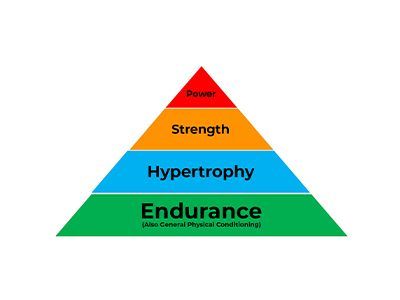Evidence-based fitness, sports, and exercise science information is the backbone of all our national training qualifications
Who We Are
WHY CHOOSE ACADEMY OF FITNESS AND HIGH PERFORMANCE?
For us, setting you apart in your career is about more than our obsessive focus on real world experience, cutting edge facilities and tech and next level business and marketing skills.
AFHP provides our students with:
- Small groups with lots of 1-1 time so you can get the most out of every session.
- Trainers who are actively involved in sports and fitness research with USQ, so you are at the forefront of sports and fitness development.
- Building a deep, but very practical hands-on understanding of the theory, so you can create a great experience and get outstanding results for yourself and your clients.
- Having the confidence to build relationships so you attract and KEEP high quality clients who want to pay you what you’re really worth.
25-54
Average age bracket for a Fitness Instructor in Aus.
29%
Fitness Instructors who work full time.
$1100+
Average weekly income of a fitness instructor.
60%
Number of fitness instructors who are female.
Source: *Job Outlook Government website. ABS Labour Force Survey, annual average 2018
You need to set yourself apart from the rest, right from the beginning.
There are a lot of ways to grab a quick Personal Training Qualification. However, if you want to build a thriving, high-demand sports or fitness career, be genuinely able to help people and be a person that other people look to as an expert, then the Academy of Fitness and High Performance is for you.
National Training Courses
Obtain nationally accredited qualifications in the fitness industry.
Continuing Education Credits
Advance your career by improving your existing skills, or developing new ones.
Who We Work With
WHO ACADEMY OF FITNESS AND HIGH PERFORMANCE WORKS WITH
Our courses are not just for people who want to hit the ground running as a Personal Trainer or build a career around sports and fitness.
AFHP thrives working with:
- Athletes and emerging athletes looking for next-level understanding of their training, strength, conditioning and injury prevention, or want a flexible income that fits around their training.
- Parents who want to be able to support their kids and talk the talk with coaches, allied health professionals and teachers.
- High school students and graduates brand new to the industry.
- Qualified sports and fitness enthusiasts looking to upskill.
- Adults adding a secondary vocation.
NATIONAL FITNESS EDUCATION & ATHLETIC PREPARATION COACHING
Are you an Industry Professional and want to upgrade your skills on a weekend?
Click here for more information about our Scientific Abbreviation Training and Kettlebell Instructor Course.
Do you need study assistance?
The Academy of Fitness and High Performance Fast Track Certificate IV in Fitness is full time and meets the requirements of an approved course of education and study from an approved education provider for the purpose of qualifying for a student payment.
Follow our Blogs

Unlocking the Power of Resistance Training: Understanding the Strength Training Pyramid In the vast world of fitness, resistance training stands out as a cornerstone for achieving various fitness goals, from building strength and muscle mass to enhancing power and overall physical performance. At the core of effective resistance training lies the understanding of the strength training hierarchy pyramid, a fundamental concept that guides the structuring of workouts based on specific goals and desired outcomes. Resistance Training Hierarchy Imagine a pyramid, with its base representing the foundational aspects of fitness, such as endurance and general physical preparation, and its peak symbolising the pinnacle of performance – power. This hierarchical structure serves as a roadmap for designing training programs tailored to individual needs and objectives. Endurance and General Physical Preparation At the base of the pyramid lies endurance and general physical preparation. This level focuses on developing muscular endurance and overall conditioning. Workouts typically involve light loads, high repetitions (15-20 reps), and short rest periods (20-30 seconds). The emphasis here is on building stamina and laying a solid foundation for more advanced training phases. Hypertrophy Moving up the pyramid, we encounter hypertrophy training, aimed at increasing muscle size and volume. Moderate loads (70-80% 1RM) are utilised for moderate repetitions (8-12 reps) across 3-5 sets. Rest intervals range from 30 to 90 seconds. Hypertrophy training induces muscle growth through metabolic stress and mechanical tension, leading to noticeable gains in muscle size and definition. Strength Ascending further, we reach the strength phase, characterised by heavy loads (80-100% 1RM) and low to moderate repetitions (1-6 reps). Rest intervals are longer, typically lasting 2-5 minutes between sets. Strength training focuses on improving maximal strength, enhancing neuromuscular efficiency, and increasing muscle fibre recruitment. Power At the apex of the pyramid sits power training, which targets explosive strength and athletic performance. Workouts involve moderate to heavy loads (75-100% 1RM) for low to moderate repetitions (1-5 reps) across 3-5 sets. Rest periods are shorter compared to strength training, ranging from 2 to 3 minutes. Power training enhances the ability to generate force rapidly, translating into improved speed, agility, and power output. It's a continuum While the set and rep protocols outlined above provide a structured framework, it's essential to recognise that they are not set in stone. Individual factors such as age, body type, training history, and biomechanics play significant roles in determining optimal training parameters. Moreover, progression in resistance training is rarely linear, with individuals experiencing fluctuations in performance from day to day and week to week. Preparing for periods of slower progress is just as crucial as celebrating milestones. We are Built to be Lazy! Understanding that the body's default mode is to conserve energy underscores the importance of pushing beyond comfort zones and working close to muscular failure. Progressive overload – the gradual increase in training stimulus – is key to driving adaptations and achieving long-term results. Take Home Message The journey of resistance training is a dynamic and personalised process. It requires diligence, consistency, and an open-minded approach to experimentation and adaptation. Remember, what works for one person may not necessarily work for another. The key is to stay committed, make sure your clients listen to their body, and embrace the journey of self-improvement. W hether you have a seasoned athlete or a fitness enthusiast embarking on a new journey, remember to train smart, stay patient, and above all, enjoy the process of helping them become the best version of themselves! Visit AFHP.com.au to learn more about our courses!

When we talk about fitness goals, the term ‘body composition’ often arises, sometimes interchangeably with ‘losing weight.’ However, as fitness professionals, we understand that body composition encompasses far more than a number on a scale. It refers to the ratio of various components within the body, including water, muscle, fat, tissue, and bone. Defining this term is crucial because it guides our approach to exercise training and nutrition, ensuring that we tailor programs to meet our clients' specific needs and goals.








